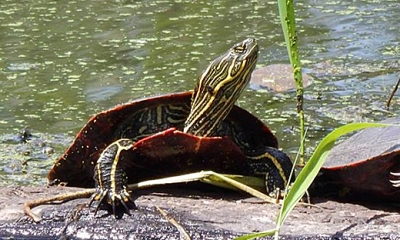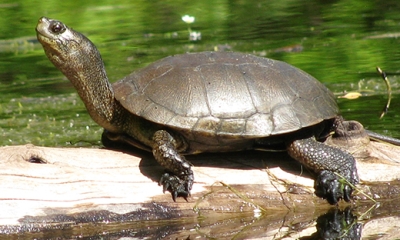
Turtles
Oregon has two native turtles, the Western pond and the Western painted turtle. Both are Oregon Conservation Strategy Species. There are opportunities for all Oregonians to become more knowledgeable about and participate in turtle conservation efforts, and land managers and planners, project managers and natural resource managers are encouraged to use our native turtle best management practices.

Types of Turtles

Western painted turtles need marshy ponds, small lakes, slow-moving streams and quiet, off-channel portions of rivers. They prefer waters with muddy bottoms with aquatic vegetation. Open ground for nesting and logs for basking help keep this species healthy.
These painted turtles occur in the Blue Mountains and Willamette Valley ecoregions. In the Columbia Plateau, East Cascades and West Cascades ecoregions, they live only along the Columbia River.
Western painted turtles are an Oregon Conservation Strategy Species in these: Blue Mountains, Coast Range, Columbia Plateau, East Cascades, West Cascades, Willamette Valley.
Photo by Robert Bryce Ott

Western pond turtles prefer marshes, streams, rivers, ponds and lakes. They need sparse vegetation nearby for digging nests and like to bask on logs.
Population declines are due to habitat loss, degradation of nesting areas by invasive plants, competition from non-native turtles and disease. Predators include raccoons and invasive bullfrogs and fish.
Western pond turtles are Oregon Conservation Strategy Species in the Coast Range, East and West Cascades, Klamath Mountains and Willamette Valley ecoregions.
Photo by Simon Wray, ODFW

